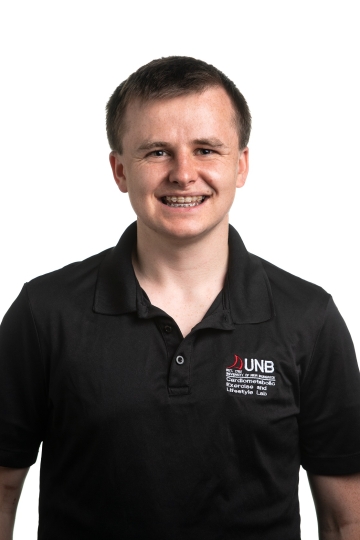Dino Pulerà
Scientific and Medical Illustrator, Art Director
Artery Studios
Learn About My Career
Dino Pulerà is a Scientific and Medical Illustrator and Art Director for Artery Studios.
I was born/grew up in: Toronto, Ontario
I now live in: Maple, Ontario
I completed my training/education at: Biomedical Communications, University of Toronto
I am an art director and medical illustrator for a medical legal studio. Our studio creates visuals for personal injury lawyers who hire us to help depict their clients' injuries. The visuals may be illustrations, animations or interactive media. Our illustrations help the lawyers when they argue their case before a judge and jury. In my free time, I run my own freelance business from my home studio.
A typical day for me involves reviewing medical reports, writing proposals, proofing and editing artwork. I also meet with medical experts to help us interpret and understand radiological images. And, if time permits, I will do some drawing. When I am proofing and editing artwork, I make sure that all the illustrations our studio creates are correct. This usually involves checking medical references and medical reports. Another part of my quality control includes making certain that all the details of a case are correctly shown and included in the artwork. I make sure that the studio style is maintained.
Writing proposals can be the most tedious part of my job. After reviewing the medical reports for each specific case, it’s up to me to come up with the visuals that will be needed to help lawyers explain their client’s injuries and help them argue their case. Medical illustrators are visual story tellers. We take difficult medical and scientific ideas or concepts and turn them into easy to understand visuals. We are really visual problem solvers.
I didn't always want to become a medical illustrator. I had planned to be a medical doctor. After my first two years of university I realized that I just didn't have the grades to make it to medical school. I completed my degree but I still had no idea of what to do with my life. During my undergrad, I learned about the Biomedical Communications program at the University of Toronto. I didn’t apply because I didn’t have any formal art training and didn’t think I had a chance to get into the program.
I spent the next two years taking courses that I always wanted to take but never had time to take in order to raise my GPA. I volunteered at the Royal Ontario Museum (ROM) in the vertebrate paleontology department. I also did some volunteering teaching at some local elementary schools in preparation for applying to teacher’s college.
I enrolled in three non-credit scientific illustration courses offered through the School of Continuing Studies at the University of Toronto. I took these courses purely for fun and personal interest. I absolutely loved those courses! The instructor thought my work was good enough to apply to the Biomedical Communications program where she was an instructor. I couldn't believe my ears! I was beside myself with excitement and disbelief. I quickly put together a portfolio and submitted my application. At the same time I had also applied to teachers college. To my astonishment and elation, I was accepted into the Biomedical Communications program. That same week, I was also accepted into teacher's college. I was able to defer my acceptance to the faculty of education for one year to see if I truly was cut out to be a medical illustrator. I was and I haven't looked back since!
I love to draw! Getting paid to draw the things that really interest me makes it seem like I’m not really working at all! I love doing work that I feel passionate about and I sometimes get to work with my friends who share similar interests. I love to learn and with this profession you keep learning new things all the time. With different projects I get to learn new science stuff. And I’m always learning about new technology and how it is applied to visual communication.
We live in picture-dominated society. Science and technology are advancing at a rapid pace. New discoveries are made almost everyday. I think it is critical for the general public to keep pace with these advances. We need this information so that we can make informed decisions in our everyday lives. This includes everything from the political leaders we elect to environmental issues to our own health care. I think that being able to make this new scientific information understandable to everyone is very important. Scientific illustrators are able to change the complex language of science into beautiful and instructional pictures. These pictures will hopefully assist the general public in being informed. One of the most gratifying aspects of my current position at Artery Studios is knowing that our work makes a positive difference in the lives of tragically injured people.
I enjoy spending time with my family, bird watching, nature photography, hiking, fishing, sketching, watching science and nature documentaries, visiting museums and reading natural history books.
If you are interested in a career that combines both art and science you should do a double major of art and science. Check out some biomedical communications programs so you can have the right mix of science and art courses. This will improve your chances of getting accepted into a program. If there is a specific field of science that really interests you, get in touch with people working in that field. Let them know you are interested in what they are doing. Volunteer your talents to their research. This is how I got "my foot in the door" to illustrating dinosaurs and comparative vertebrate anatomy.
What I do at work
I am an art director and medical illustrator for a medical legal studio. Our studio creates visuals for personal injury lawyers who hire us to help depict their clients' injuries. The visuals may be illustrations, animations or interactive media. Our illustrations help the lawyers when they argue their case before a judge and jury. In my free time, I run my own freelance business from my home studio.
A typical day for me involves reviewing medical reports, writing proposals, proofing and editing artwork. I also meet with medical experts to help us interpret and understand radiological images. And, if time permits, I will do some drawing. When I am proofing and editing artwork, I make sure that all the illustrations our studio creates are correct. This usually involves checking medical references and medical reports. Another part of my quality control includes making certain that all the details of a case are correctly shown and included in the artwork. I make sure that the studio style is maintained.
Writing proposals can be the most tedious part of my job. After reviewing the medical reports for each specific case, it’s up to me to come up with the visuals that will be needed to help lawyers explain their client’s injuries and help them argue their case. Medical illustrators are visual story tellers. We take difficult medical and scientific ideas or concepts and turn them into easy to understand visuals. We are really visual problem solvers.
My career path is
I didn't always want to become a medical illustrator. I had planned to be a medical doctor. After my first two years of university I realized that I just didn't have the grades to make it to medical school. I completed my degree but I still had no idea of what to do with my life. During my undergrad, I learned about the Biomedical Communications program at the University of Toronto. I didn’t apply because I didn’t have any formal art training and didn’t think I had a chance to get into the program.
I spent the next two years taking courses that I always wanted to take but never had time to take in order to raise my GPA. I volunteered at the Royal Ontario Museum (ROM) in the vertebrate paleontology department. I also did some volunteering teaching at some local elementary schools in preparation for applying to teacher’s college.
I enrolled in three non-credit scientific illustration courses offered through the School of Continuing Studies at the University of Toronto. I took these courses purely for fun and personal interest. I absolutely loved those courses! The instructor thought my work was good enough to apply to the Biomedical Communications program where she was an instructor. I couldn't believe my ears! I was beside myself with excitement and disbelief. I quickly put together a portfolio and submitted my application. At the same time I had also applied to teachers college. To my astonishment and elation, I was accepted into the Biomedical Communications program. That same week, I was also accepted into teacher's college. I was able to defer my acceptance to the faculty of education for one year to see if I truly was cut out to be a medical illustrator. I was and I haven't looked back since!
I am motivated by
I love to draw! Getting paid to draw the things that really interest me makes it seem like I’m not really working at all! I love doing work that I feel passionate about and I sometimes get to work with my friends who share similar interests. I love to learn and with this profession you keep learning new things all the time. With different projects I get to learn new science stuff. And I’m always learning about new technology and how it is applied to visual communication.
How I affect peoples’ lives
We live in picture-dominated society. Science and technology are advancing at a rapid pace. New discoveries are made almost everyday. I think it is critical for the general public to keep pace with these advances. We need this information so that we can make informed decisions in our everyday lives. This includes everything from the political leaders we elect to environmental issues to our own health care. I think that being able to make this new scientific information understandable to everyone is very important. Scientific illustrators are able to change the complex language of science into beautiful and instructional pictures. These pictures will hopefully assist the general public in being informed. One of the most gratifying aspects of my current position at Artery Studios is knowing that our work makes a positive difference in the lives of tragically injured people.
Outside of work I
I enjoy spending time with my family, bird watching, nature photography, hiking, fishing, sketching, watching science and nature documentaries, visiting museums and reading natural history books.
My advice to others
If you are interested in a career that combines both art and science you should do a double major of art and science. Check out some biomedical communications programs so you can have the right mix of science and art courses. This will improve your chances of getting accepted into a program. If there is a specific field of science that really interests you, get in touch with people working in that field. Let them know you are interested in what they are doing. Volunteer your talents to their research. This is how I got "my foot in the door" to illustrating dinosaurs and comparative vertebrate anatomy.
When I was a student I enjoyed:
- Art
- Science
When I was a student, I would describe myself as someone who:
- Enjoyed doing things on my own
- Always wanted to be outside
- Liked helping people
- Enjoyed working with my hands
- Felt at home in the outside, natural environment
- Felt great satisfaction in getting good grades
- Wasn’t sure what I wanted to do
- Learned best “by doing”
- Engaged in activities such as fishing, berry picking and hunting
Related Topics
Explore More Career Profiles
-
Brianna Lummerding
Career Profiles
Agronomic Innovation Manager
I look after all things related to soil management for a group of retailers. -
Li Tan (he/him)
Career Profiles
Molecular Lead
I coordinate the day-to-day operations in the DNA Extraction Lab. -
Tyler Morhart (video)
Career Profiles
Scientist, Beamline Responsible - SyLMAND
I am responsible for the SyLMAND beamline at the Canadian Light Source synchrotron facility. -
Li Tan (Video)
Career Profiles
Molecular Lead
I coordinate the day-to-day operations in the DNA Extraction Lab. -
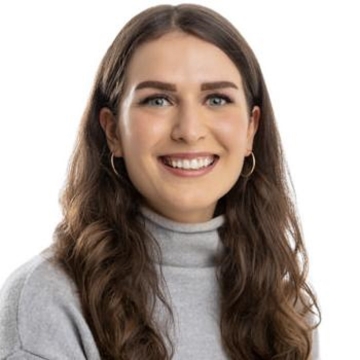
Rashell Featherstone (she/her)
Career Profiles
Senior Program Associate
I coordinate projects for the development of new products at STEMCELL. -
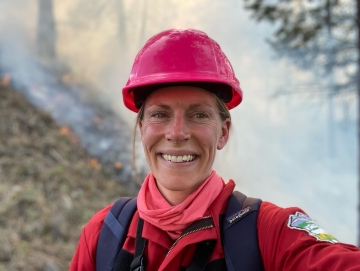
Kira Hoffman (she/her)
Career Profiles
Postdoctoral Researcher/Fire Ecologist
I am a researcher at both a university and a not-for profit organization where I am gaining experience to become a senior researcher. -
Zoë Ehlert (Video)
Career Profiles
Manager, Marker Assisted Breeding
I lead a team that develops canola crops by breeding plants with traits we are looking for. -
Zoë Ehlert
Career Profiles
Manager, Marker Assisted Breeding
I lead a team that develops canola crops by breeding plants with traits we are looking for. -
Jennifer Baltzer (she/her)
Career Profiles
Professor and Canada Research Chair in Forests and Global Change
I work at a university, teaching students and conducting research on the impact of climate change on forests in Canada and around the world. -
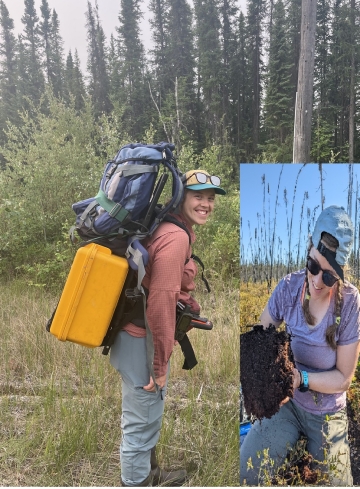
Caitlyn Lyons (she/her)
Career Profiles
Ph.D. Candidate
I am working towards my PhD and studying the forests in the Northwest Territories. -
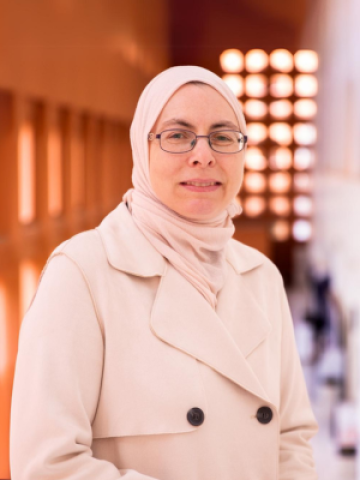
Joann Whalen
Career Profiles
Professor at the Faculty of Agricultural and Environmental Sciences,
I teach advanced courses on how to manage soils to produce healthy, nutritious food and maintain healthy ecosystem functions.

